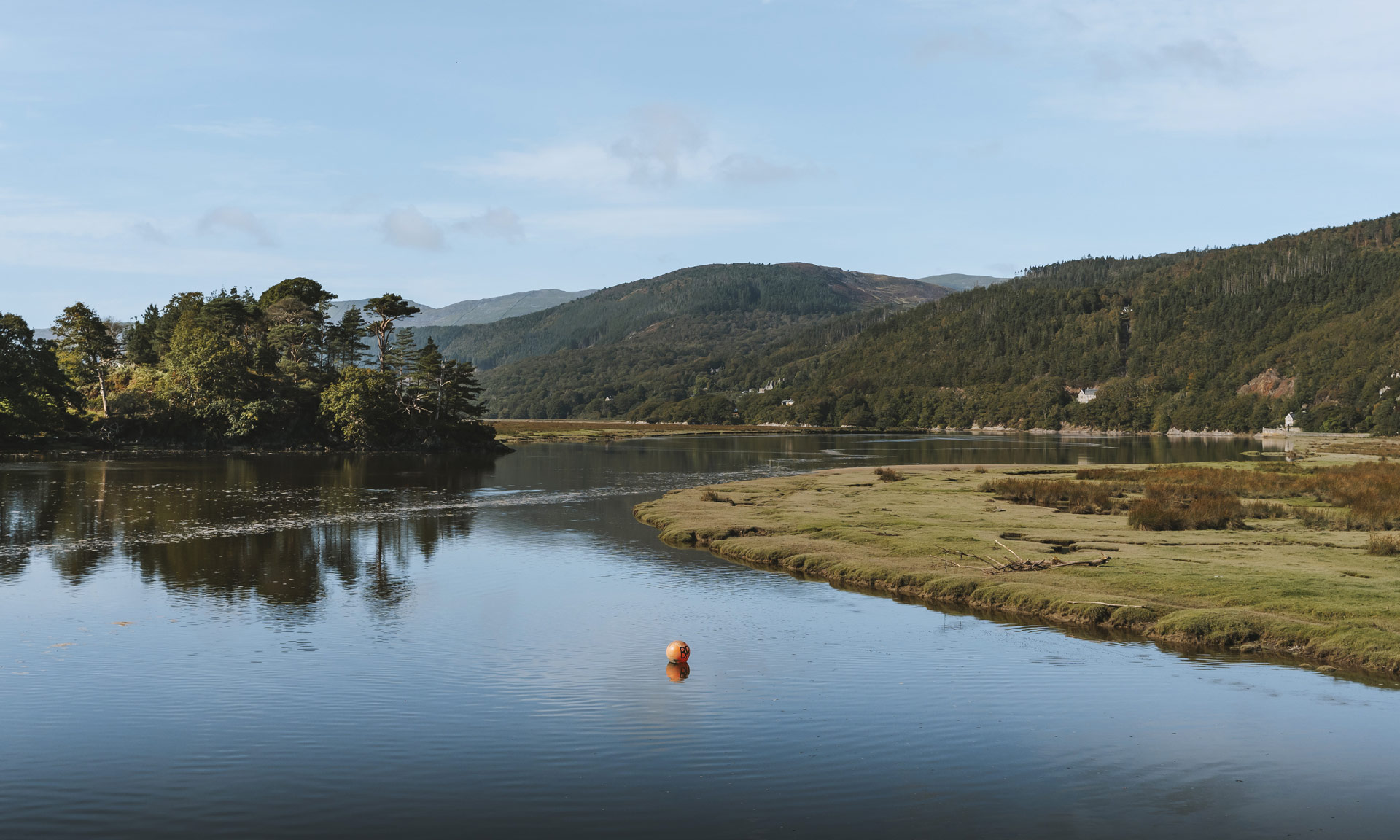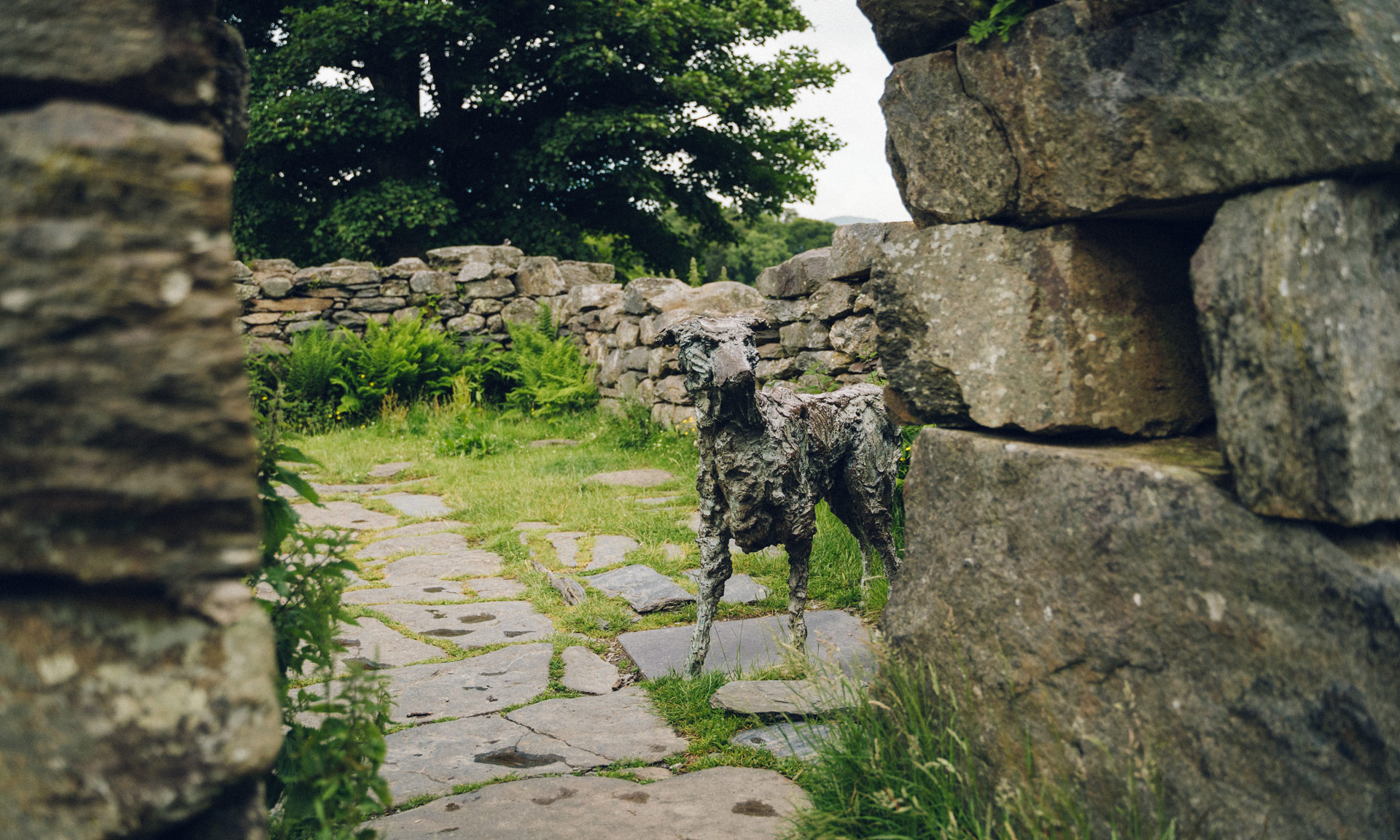Eryri is a landscape steeped in mythology and folklore. From legends of dragons and giants to stories of magical fairies and mystical lakes, the landscape has inspired countless tales over centuries.
What better way to truly immerse in the myths and legends of Eryri than to walk its rugged terrain, following in the footsteps of mythical beings and exploring the places that have inspired these timeless tales? Here are five walks and routes that will allow you to discover the folklore of Eryri.

Benar Boardwalk
Benar Boardwalk is a wooden boardwalk that extends onto the sandy shores of Benar Beach. It is a great option for families with prams and those who use tramper-style mobility scooters. From the boardwalk, visitors can enjoy spectacular views of Cardigan Bay.
Cardigan Bay is the setting for one of Wales’ most famous legends, the story of Seithennyn and Cantre’r Gwaelod. According to the legend, Cantre’r Gwaelod was a mythical city located in Cardigan Bay. The city was surrounded by gates to protect it from flooding during higher tides. It was the responsibility of a young man called Seithennyn to close the city’s gates each night.
However, on one night, Seithennyn drank too much mead and forgot to lock the gates. By the morning, the city of Cantre’r Gwaelod was flooded. Many claim that on quiet days, you can hear the bells of Cantre’r Gwaelod ringing underwater.
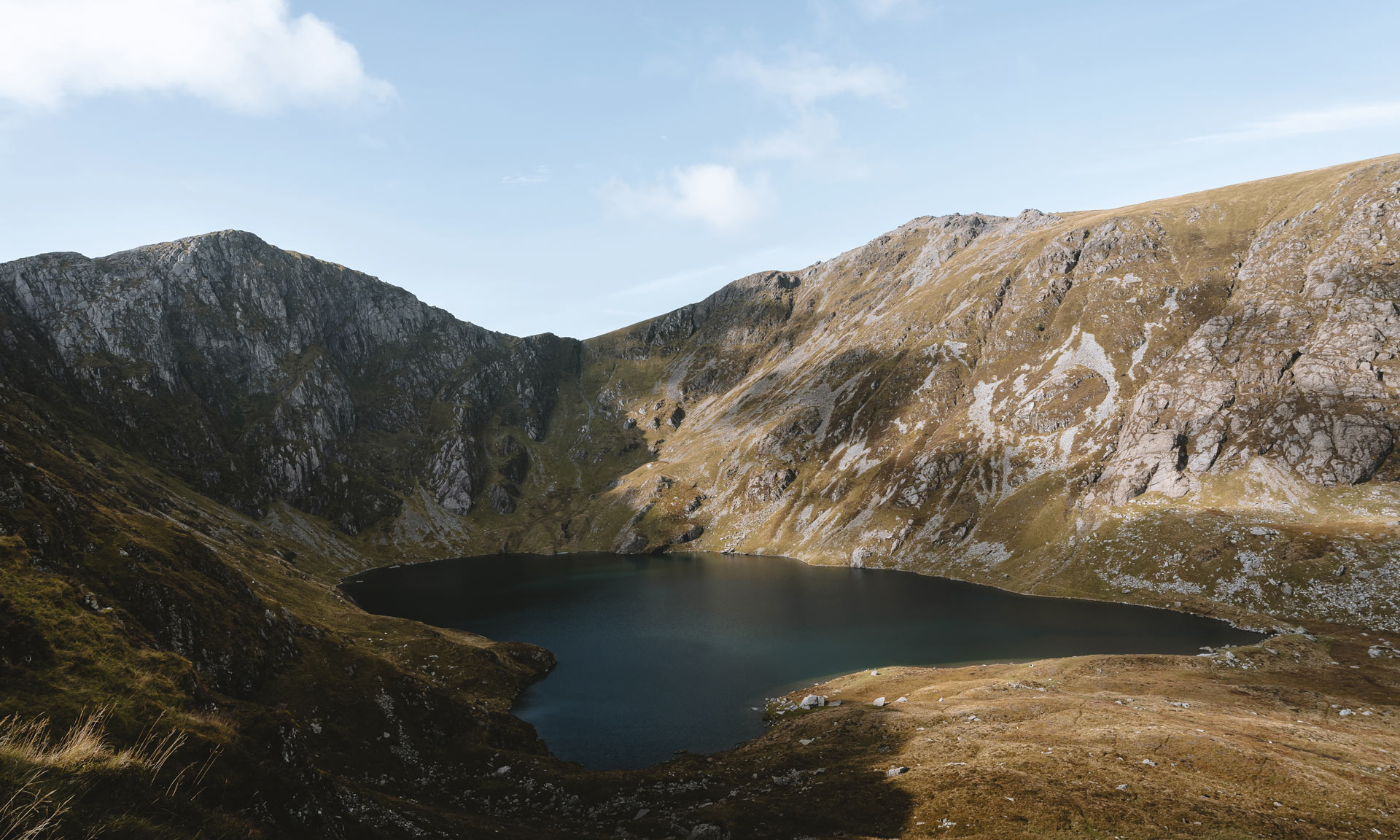
Cader Idris
Standing at 2,930 feet, Cader Idris is one of Eryri’s most well-known peaks. Three routes lead to the summit of Cader Idris: the Minffordd Path, Llanfihangel y Pennant and Tŷ Nant (Pony) Path.
Cader Idris is undoubtedly the most steeped in mythology out of all the peaks in Eryri. Countless legends are connected to this mystical summit and its surrounding lakes. The name Cader Idris, which means Idris’ Chair, is often said to have been derived from a giant called Idris. Legend has it that Idris used the summit as a chair to survey his kingdom. Another theory suggests that the mountain is named after Idris ap Gwyddno, a 7th-century prince of Meirionnydd.
Many of the lakes around Cader Idris are supposedly bottomless, and it is said that after spending a night on the peak, one would either wake up a poet or a ‘madman’. Welsh mythology also suggests that Cader Idris was the hunting ground of Gwyn ap Nudd and his Cŵn Annwn (Hell Hounds). The howling of this pack of hounds foretold death to all that heard it, herding their soul into the underworld.
Minffordd Path, Cader Idris
Llanfihangel-y-Pennant, Cader Idris
Tŷ Nant (Pony Path), Cader Idris

Llyn Tegid North and South
Llyn Tegid is one of Eryri’s most mythical lakes and is steeped in Welsh folklore. According to legend, a town rests deep beneath the lake’s surface, a result of the cruel and wicked ways of King Tegid Foel, after whom the lake was named. While many visitors to Llyn Tegid visit to take part in water activities such as paddleboarding and kayaking, two fantastic walking routes offer stunning views of the lake. The Llyn Tegid North and South routes run through the rich countryside adjacent to the lake’s shoreline, providing an opportunity to appreciate the natural beauty and rich cultural history of the area.
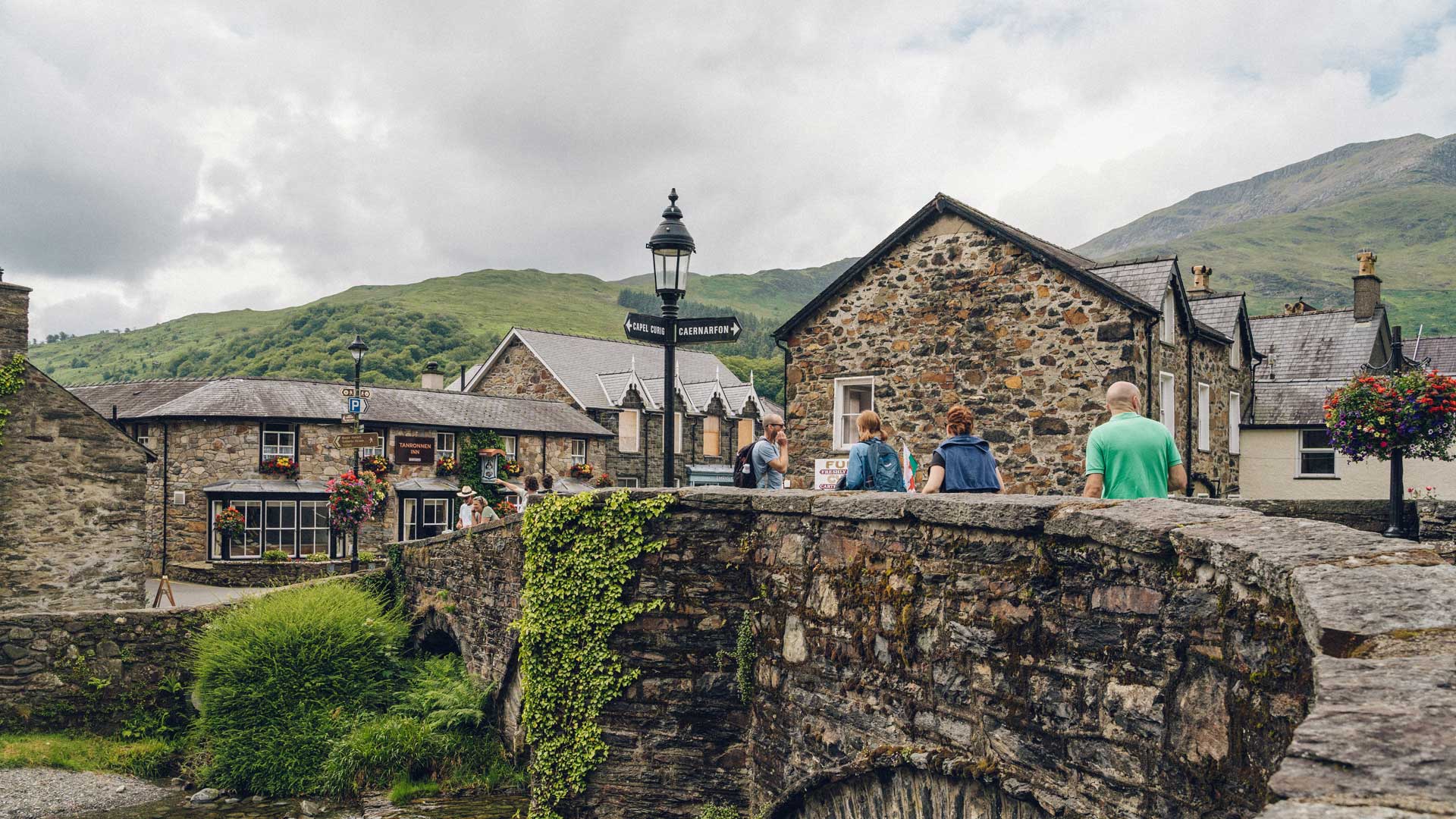
Fisherman’s Path and Cwm Bychan
The Fisherman’s Path and Cwm Bychan is a circular route that starts from the village of Beddgelert. The village is named after one of Wales’ most notable legends—the tale of Gelert.
‘Beddgelert’ translates to Gelert’s grave and is known as the final resting place of Gelert, the faithful hound of Llywelyn the Great, one of Wales’ famous princes. Llywelyn killed Gelert in a disastrous and heartbreaking misunderstanding. You will pass Gelert’s grave along this route.
Further along the trail, as you descend towards Llyn Dinas, you might notice a rocky outcrop high above the lake. Legend has it that a king embarked on numerous failed attempts at building a castle on this outcrop. He took the advice of a wizard, Myrddin Emrys, who claimed that dragons were fighting beneath the hill, causing his day’s work to fall to ruin each night. The king and his men dug deep into the mountain, releasing one red and one white dragon. The dragons fought fiercely until the white dragon fled. The red dragon returned to his mountain lair. The king successfully built his castle and named it Dinas Emrys, in honour of the wizard.
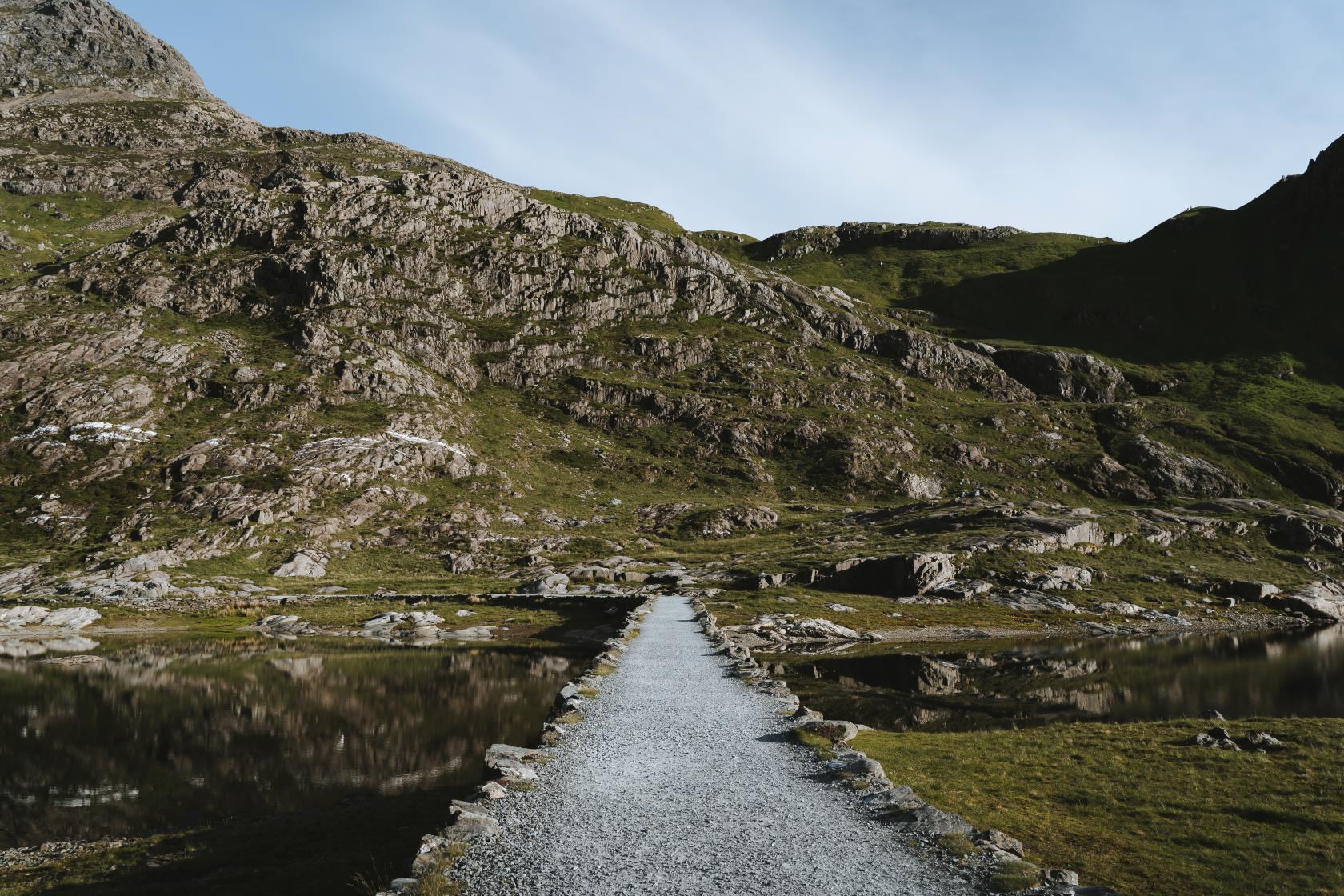
The Miners’ Track, Yr Wyddfa
The Miner’s Track is one of the many challenging hikes to the summit of Eryri’s busiest mountain. Starting from Pen y Pass, the route will take you along Llyn Llydaw, up a challenging rocky ascent, to Yr Wyddfa’s iconic summit.
Legend has it that Yr Wyddfa is the final resting place of Rhita Gawr, a fearsome giant who wore a cloak made of men’s beards. He challenged King Arthur to combat, but Arthur defeated him and cut off his head. According to the legend, the cairn on the summit of Yr Wyddfa marks the final resting place of Rhita Gawr’s head. Yr Wyddfa roughly translates to ‘grave’.
The Miner’s Track is home to another Arthurian tale. Legend has it that King Arthur was fatally wounded by an arrow in battle at Bwlch y Saethau, which means Pass of the Arrows. After being struck, he was carried to the shores of Llyn Llydaw, where a boat manned by three maidens awaited him, taking him through the mist to the mythical land of Afallon (Avalon).
